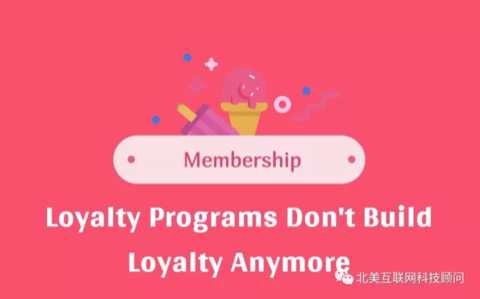Loyalty Programs Don't Build Loyalty

The Internet has forever shifted the power toward consumers, who now have instant access to any information that helps them make decisions on purchasing a product or service.
The switching cost to a nearby competitor is cheap. A few simple taps on their smartphones would present them plenty of alternatives to a business that they’ve been visiting for years.
“But wait,” you say, “I have a loyalty program. They won’t leave me.”
Well. You better have one. Because most likely your competitors are already running loyalty programs. There are roughly two billion loyalty program memberships in the US, according to research conducted by Fast Company. And consumers, on average, subscribe to eight loyalty programs. When I decide to leave you for another store, I won’t hesitate just because you have a loyalty program: I can get it from other stores too.
Also, does your loyalty program reward your customers exactly what she wants? I have enrolled a few loyalty programs, and I haven’t been back to some of them for years. Why? Because despite they reward me a free sea-salt coffee after my tenth purchase, I just don’t like their coffee. But I crave their cream puff bread! It would be nice if they offer that instead of the coffee, since both costs about the same and are regular items on their menu.
Stores can no longer depend on points, discounts, and rewards to foster customer loyalty. Customers expect more for you to earn their loyalty.
Focus on deliver exceptional customer service
It’s time to focus on delivering exceptional customer service.
Exceptional customer service lays the foundation for customer loyalty. On the other hand, poor customer service impeds your success to customer loyalty no matter how incredible you think your loyalty program is.
Customers aren’t loyal to a program; they are loyal because of the entire experience that they receive when they interact with your business.
No, I’m not talking about the “We love customers” sign stamped superfluously on your business front door, nor the “Customer is king” slogan repeated tirelessly in ads on national tv. I’m talking about relentlessly monitoring and managing your customer experience. Dig deeper into knowing what precisely each of your customers likes and dislikes.
Forrester’s research shows that exceptional customer experience correlates to loyalty metrics like retention. Delivering such experience requires relentlessly monitoring and managing. And you can’t manage what you don’t measure.
Collecting customer feedbacks
Collecting customer feedbacks is the best way to measure whether your product or service meets customer expectations.
You can conduct customer surveys regularly to track customer loyalty over time. The Net Promoter Score (NPS) survey is perfect for doing just that. NPS survey asks on a scale of 1 to 10 how likely your client will recommend you to others. Follow up with a question on why the customer chooses the score.
Positive feedbacks tell you that you are doing fine at converting new customers while negative feedbacks help you identify areas that need particular attention and improvements. Listening to your customers is the only way to guarantee you are offering a fantastic customer service.
Collecting customer data
Collecting customer preferences, such as the products that she desires the most, or her preferred time to make an appointment, help you deliver a personalized customer experience that your customers will love.
Understanding what your customers want equips you to design personalized loyalty reward that offers a more compelling incentive for a customer to come back for more. In my previous example, if the coffee store offers me a cream puff bread reward, I’d seriously think about going back again.
Conclusion
In conclusion, a loyalty program alone is not the solution to customer loyalty. You should treat it as a supporting tool to exceptional customer service to foster customer loyalty.
You need to monitor customer experiences relentlessly: collect customer feedbacks to measure customer satisfaction over time; collect customer data such as profile, preferences, and purchasing habit, to gain insight into who your customers are, how your customers currently use your products and services, and what makes your customers loyal.
